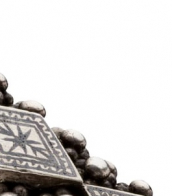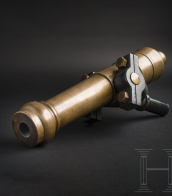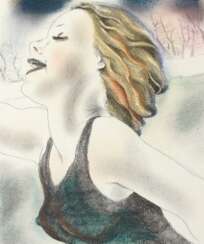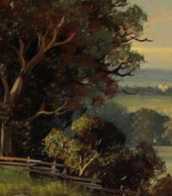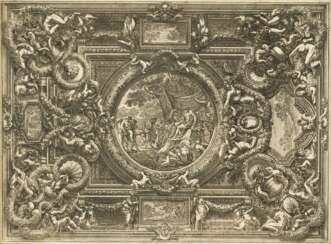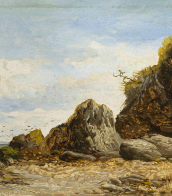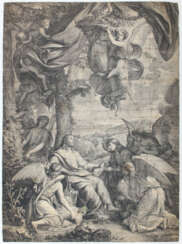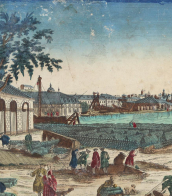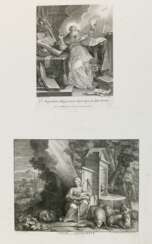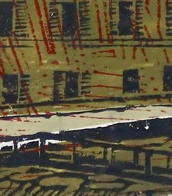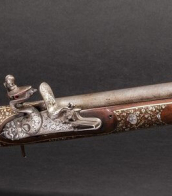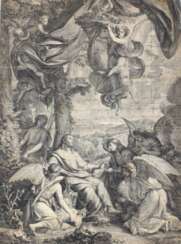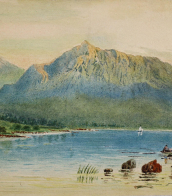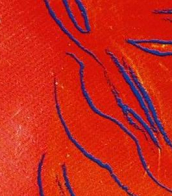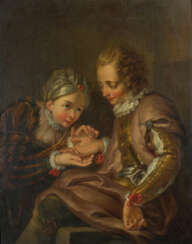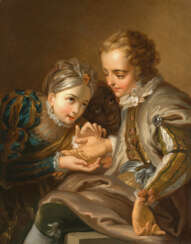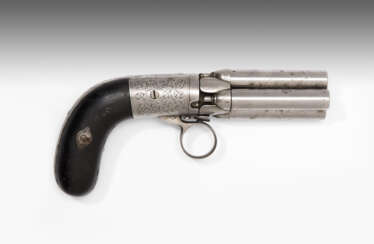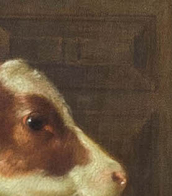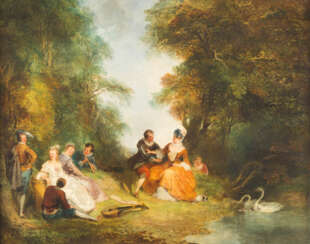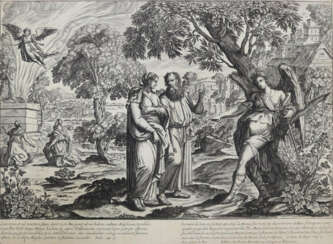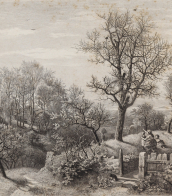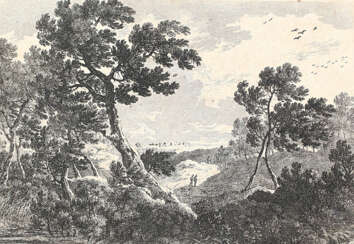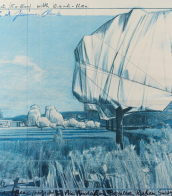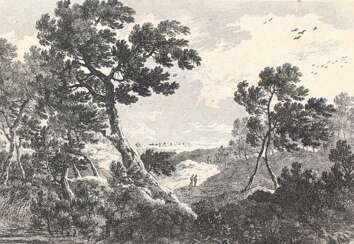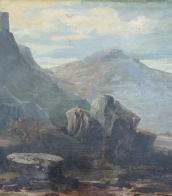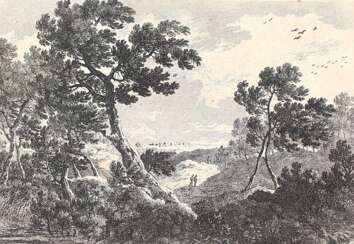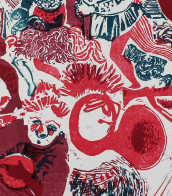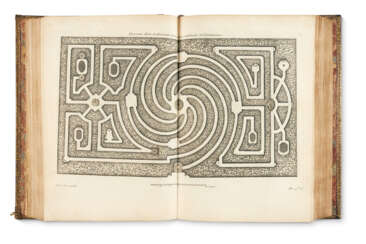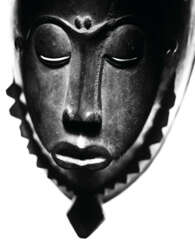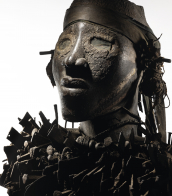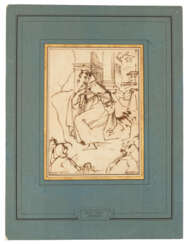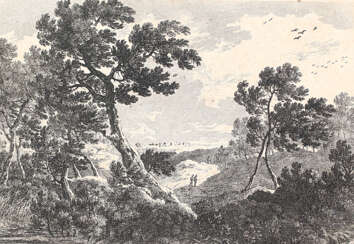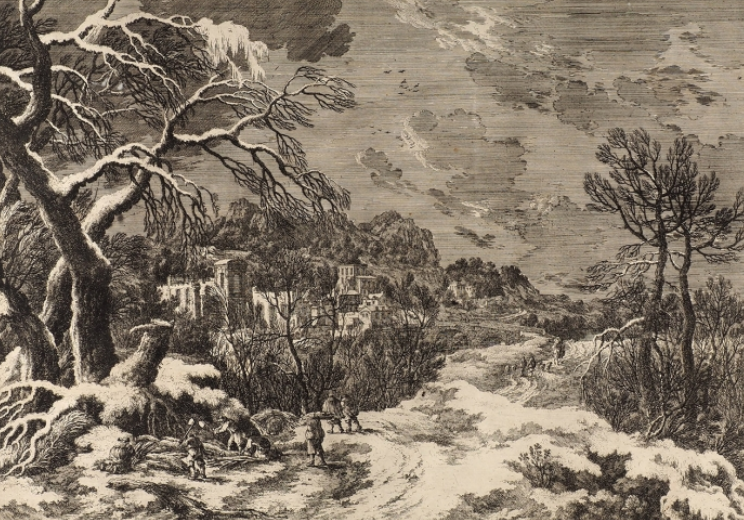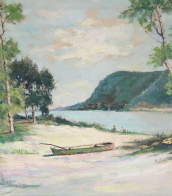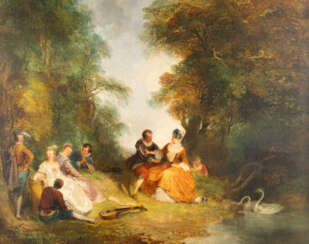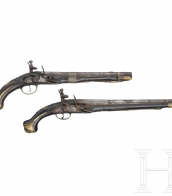mariette

Giorgio Ghisi was an Italian engraver from Mantova who also worked in Antwerp and France. He made both engravings and damascened metalwork, although only two surviving examples of the latter are known.
.jpg)
Perino del Vaga (nickname of Piero Bonaccorsi) was an Italian painter and draughtsman of the Late Renaissance/Mannerism.
Del Vaga's style was renowned for his vitality and elegance. His paintings are considered important in the mediation between the Roman Raphaelesque tradition and the first Florentine Mannerism. He combined the manners of Raphael and Andrea del Sarto. Many of his works were engraved, even in his own lifetime. Daniele da Volterra, Girolamo Siciolante da Sermoneta, Luzio Romano and Marcello Venusti were among his principal assistants.

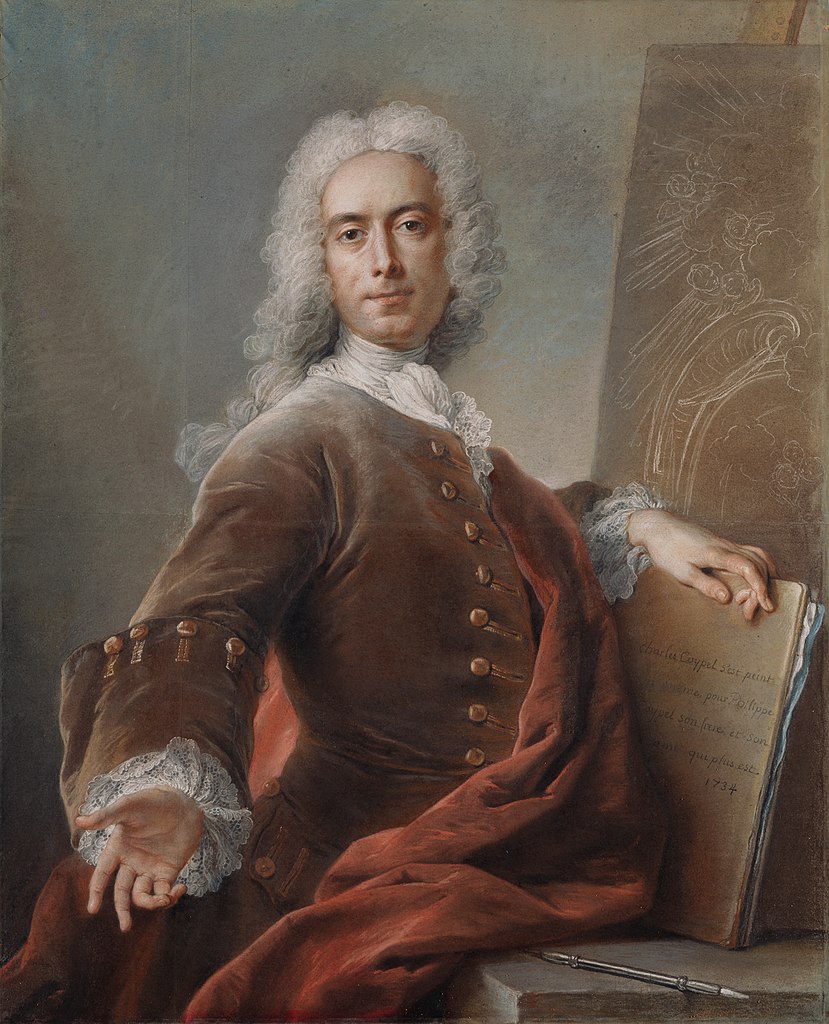
Charles-Antoine Coypel was a multifaceted French Rococo artist, known for his contributions as a painter, designer, playwright, and art critic. Born into a family with a significant artistic legacy, Coypel rose to prominence in the French court, eventually serving as the court painter and the director of the Académie Royale. His work, which often blended dramatic narrative with intricate detail, played a pivotal role in the development of Rococo art in France, reflecting the opulent and expressive tendencies of the period.
Coypel's artistic output includes a range of subjects, from religious themes, as seen in his etching "The Virgin and Child," to theatrical history paintings that convey operatic passions and high drama. His ability to infuse his compositions with emotional depth and narrative complexity, alongside his mastery of the Rococo style's playful and ornamental characteristics, distinguishes his work within the era. Notably, Coypel was also involved in the design of tapestries for the Gobelins Manufactory, illustrating scenes from Miguel de Cervantes's "Don Quixote," which remained influential through the end of the 18th century.
His artworks, such as "The Virgin and Child," showcase not only his technical skill but also his sensitivity to composition and form, contributing to his reputation as one of the leading painters in the French court during the 18th century. Coypel's legacy is preserved in his paintings, etchings, and tapestry designs, which continue to be celebrated for their artistic and historical significance.
For collectors and experts in art and antiques, Charles-Antoine Coypel's work represents an essential connection to the Rococo period's rich cultural and aesthetic traditions. His contributions to French art history, particularly through his role at the Académie Royale and his influence on the development of Rococo style, make his work a valuable study for those interested in the dynamics of French art and culture during the 18th century.
To stay informed about updates related to Charles-Antoine Coypel, including new discoveries, sales, and auction events of his works, consider signing up for updates. This service will provide tailored notifications to enthusiasts and collectors eager to explore and acquire pieces by Coypel, ensuring they remain at the forefront of developments in the field of Rococo art.


Charles-Antoine Coypel was a multifaceted French Rococo artist, known for his contributions as a painter, designer, playwright, and art critic. Born into a family with a significant artistic legacy, Coypel rose to prominence in the French court, eventually serving as the court painter and the director of the Académie Royale. His work, which often blended dramatic narrative with intricate detail, played a pivotal role in the development of Rococo art in France, reflecting the opulent and expressive tendencies of the period.
Coypel's artistic output includes a range of subjects, from religious themes, as seen in his etching "The Virgin and Child," to theatrical history paintings that convey operatic passions and high drama. His ability to infuse his compositions with emotional depth and narrative complexity, alongside his mastery of the Rococo style's playful and ornamental characteristics, distinguishes his work within the era. Notably, Coypel was also involved in the design of tapestries for the Gobelins Manufactory, illustrating scenes from Miguel de Cervantes's "Don Quixote," which remained influential through the end of the 18th century.
His artworks, such as "The Virgin and Child," showcase not only his technical skill but also his sensitivity to composition and form, contributing to his reputation as one of the leading painters in the French court during the 18th century. Coypel's legacy is preserved in his paintings, etchings, and tapestry designs, which continue to be celebrated for their artistic and historical significance.
For collectors and experts in art and antiques, Charles-Antoine Coypel's work represents an essential connection to the Rococo period's rich cultural and aesthetic traditions. His contributions to French art history, particularly through his role at the Académie Royale and his influence on the development of Rococo style, make his work a valuable study for those interested in the dynamics of French art and culture during the 18th century.
To stay informed about updates related to Charles-Antoine Coypel, including new discoveries, sales, and auction events of his works, consider signing up for updates. This service will provide tailored notifications to enthusiasts and collectors eager to explore and acquire pieces by Coypel, ensuring they remain at the forefront of developments in the field of Rococo art.


Jean-Antoine Watteau was a French painter and draughtsman whose brief career spurred the revival of interest in colour and movement, as seen in the tradition of Correggio and Rubens. He revitalized the waning Baroque style, shifting it to the less severe, more naturalistic, less formally classical, Rococo. Watteau is credited with inventing the genre of fêtes galantes, scenes of bucolic and idyllic charm, suffused with a theatrical air. Some of his best known subjects were drawn from the world of Italian comedy and ballet.


Rembrandt Harmenszoon van Rijn, a Dutch Baroque painter and printmaker, was born on July 15, 1606, in Leiden, Netherlands, and died on October 4, 1669, in Amsterdam. He is celebrated as one of the greatest storytellers in art history, acclaimed for his adept portrayal of human emotions and dramatic narratives. Rembrandt's extensive oeuvre includes portraits, self-portraits, landscapes, genre scenes, allegorical, historical, and biblical themes, as well as animal studies. His artistry shined during the Dutch Golden Age, a period marked by cultural and scientific achievements in the Netherlands.
Rembrandt's education in art began around the age of 10 when he left the Latin School in Leiden to train as an artist. He apprenticed with artists like Jacob van Swanenburg and Pieter Lastman, mastering various aspects of painting. He opened his own studio in Leiden around 1624 or 1625, sharing it with his colleague Jan Lievens. By 1631, he had moved to Amsterdam, where he achieved significant success and trained many important Dutch painters.
Among Rembrandt's notable works are "The Anatomy Lesson of Dr. Nicolaes Tulp" (1632), "The Night Watch" (1642), and "The Syndics of the Amsterdam Drapers’ Guild" (1662). He was also renowned for his self-portraits, creating around 80 over his lifetime, more than any other artist until the 20th century. These self-portraits were not just artistic endeavors but also experiments with facial expressions and lighting effects. Additionally, Rembrandt was a master etcher, transforming etching from a reproductive technique into an art form.
Rembrandt's painting style is characterized by its dramatic use of light and shadow, known as chiaroscuro. His ability to depict materials realistically was unparalleled; his portrayal of metals and fabrics was so lifelike that they appeared to glow and be tangible. He was also known for his impasto technique, applying paint thickly to the canvas, adding a three-dimensional quality to his works.
Despite his artistic prowess, Rembrandt faced financial difficulties and personal tragedies throughout his life. He declared bankruptcy in 1656, a downfall attributed partly to his extensive collection of art objects and curiosities. His masterpieces, however, continued to garner appreciation and influence generations of artists that followed.
For collectors and experts in art and antiques, Rembrandt's works represent a pinnacle of artistic achievement in the Dutch Golden Age. His mastery in portraying the human condition and his innovative techniques in painting and etching make his works highly prized and influential in the art world.
To stay updated on new product sales and auction events related to Rembrandt van Rijn, sign up for our updates. This subscription service is dedicated exclusively to news and events concerning works related to this unparalleled master of the Dutch Golden Age.
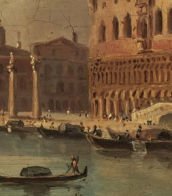
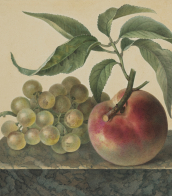
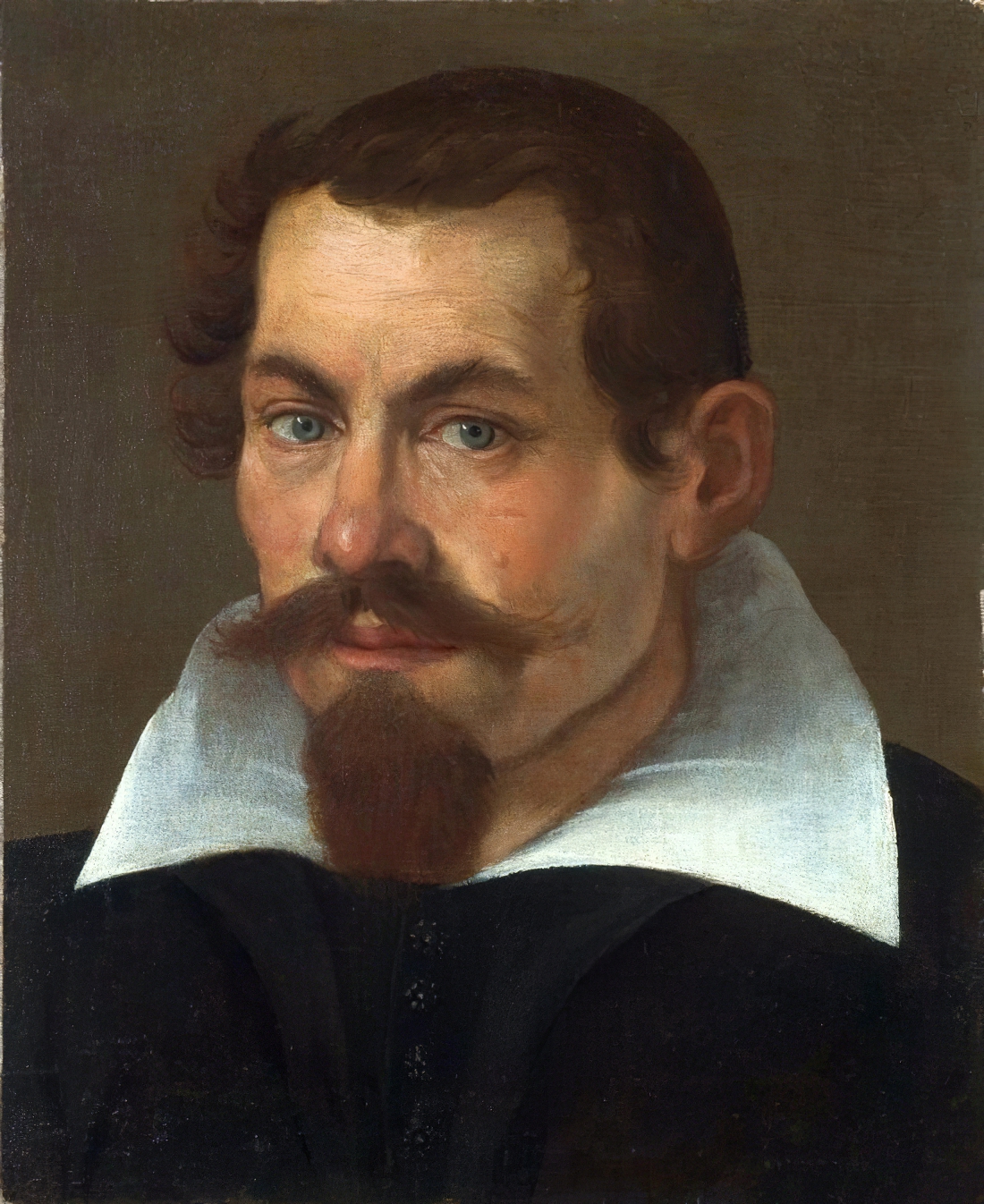
Agostino Carracci, an Italian painter and printmaker born in 1557 in Bologna, is celebrated not just for his own art but also for his significant contributions alongside his brother Annibale and cousin Ludovico to the revitalization of Italian painting at the end of the sixteenth century. While Agostino's paintings are noteworthy, he is particularly distinguished as one of the premier printmakers of his era, producing high-quality reproductive engravings of works by renowned artists like Veronese and Tintoretto, as well as his original creations.
His collaborative work with Annibale on the frescoes for the gallery of the Palazzo Farnese in Rome is one of the notable highlights of his career, demonstrating the Carracci family's impact on the direction of Italian art towards a more realistic and classical style, countering the prevalent Mannerist tendencies of their time. His untimely death in 1602 in Parma curtailed a career that, through his engravings and teachings at the informal academy founded in Bologna with his relatives, influenced a broad swath of the art world, including future generations.
For art collectors and experts, Agostino Carracci's works offer a glimpse into a pivotal moment in art history, where a shift towards classical realism was being forged. His engravings and paintings remain a testament to his skill and a vital part of the narrative of Italian art's evolution.
To delve deeper into Agostino Carracci's world and stay informed about related artworks and auction events, signing up for updates is a proactive step. By subscribing, you'll receive tailored information about Agostino Carracci, ensuring you're always in the loop regarding new insights and opportunities in the realm of art and antiques related to this influential figure.


Jean-Antoine Watteau was a French painter and draughtsman whose brief career spurred the revival of interest in colour and movement, as seen in the tradition of Correggio and Rubens. He revitalized the waning Baroque style, shifting it to the less severe, more naturalistic, less formally classical, Rococo. Watteau is credited with inventing the genre of fêtes galantes, scenes of bucolic and idyllic charm, suffused with a theatrical air. Some of his best known subjects were drawn from the world of Italian comedy and ballet.






